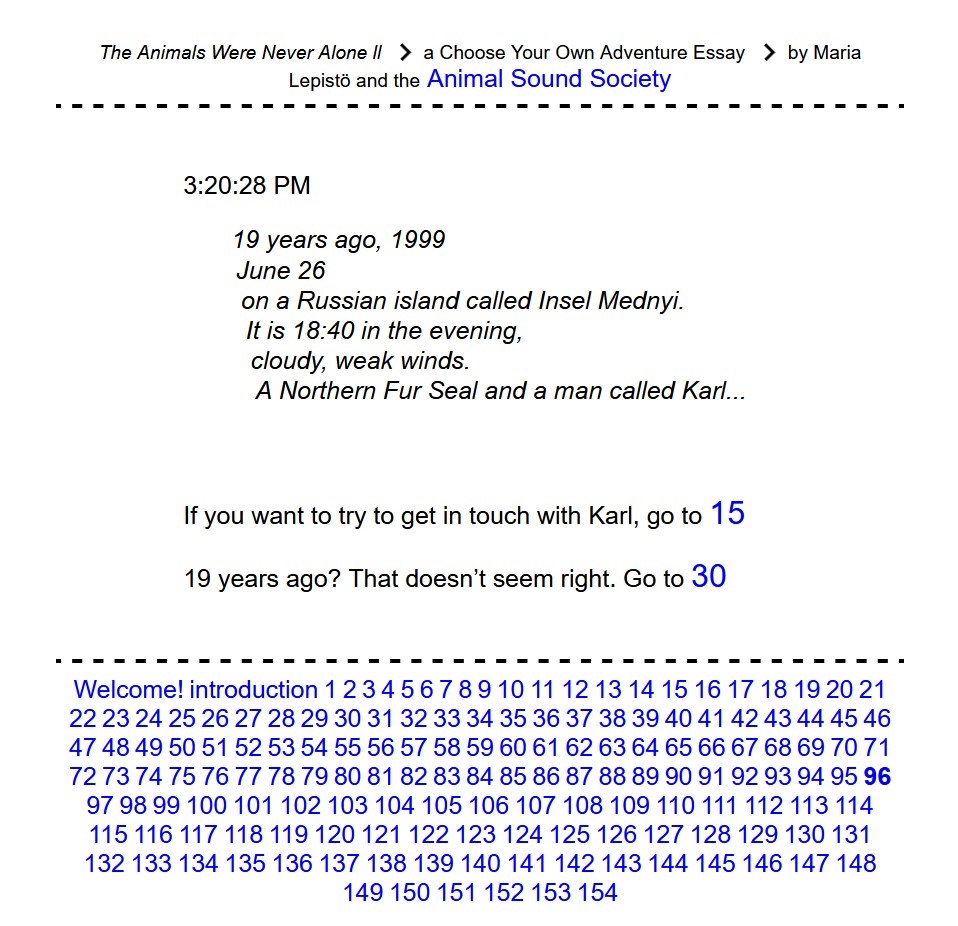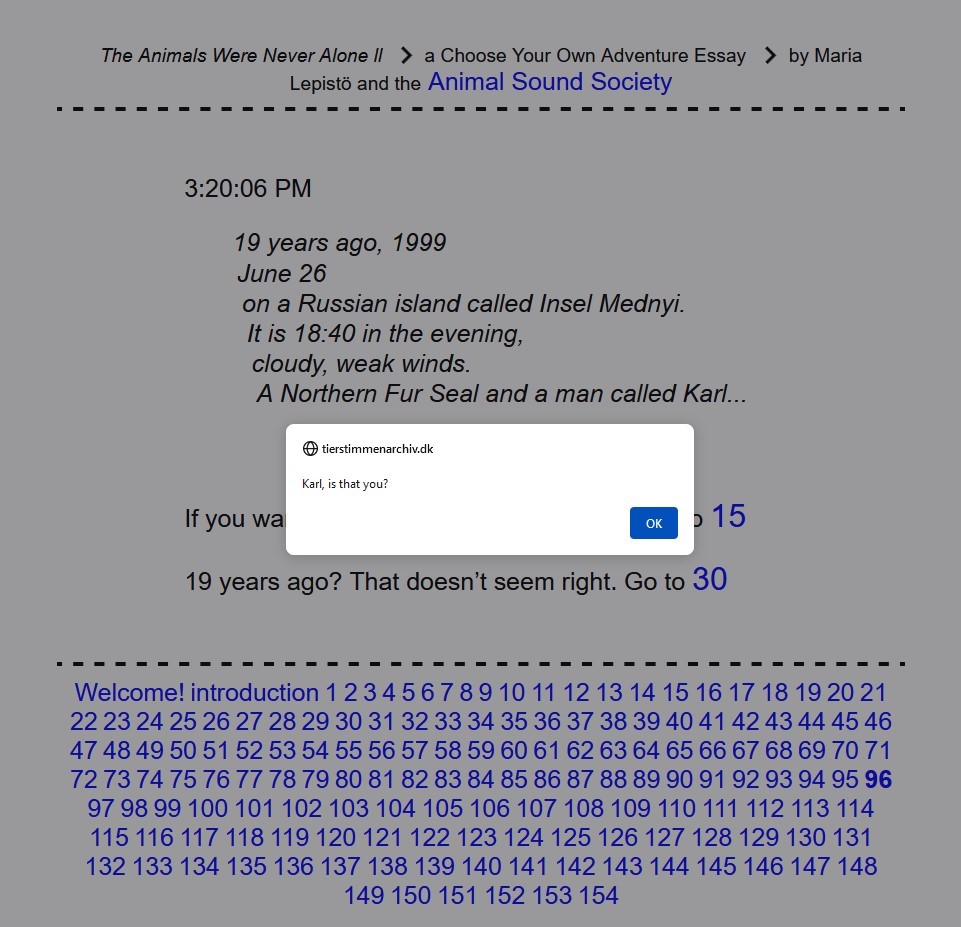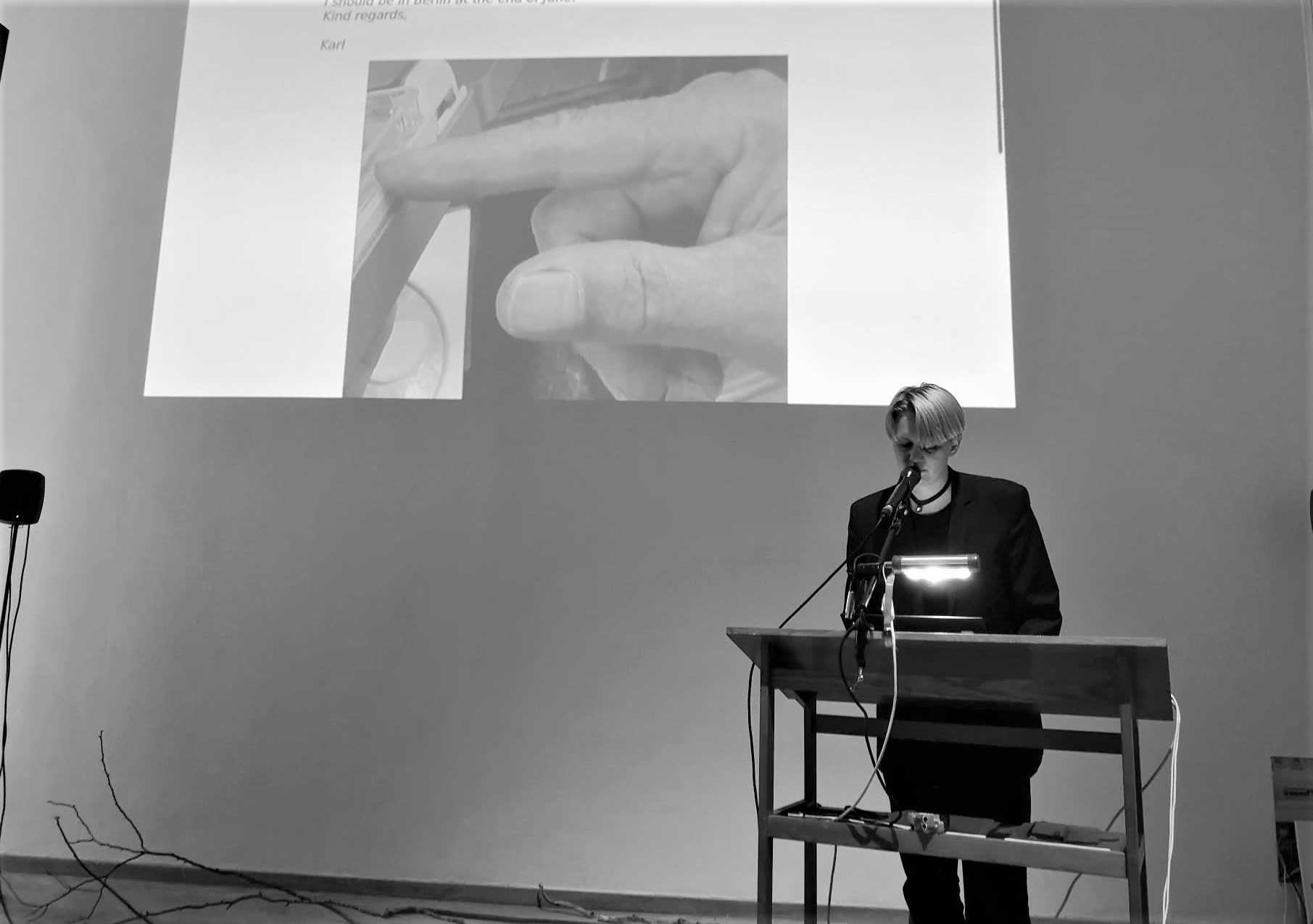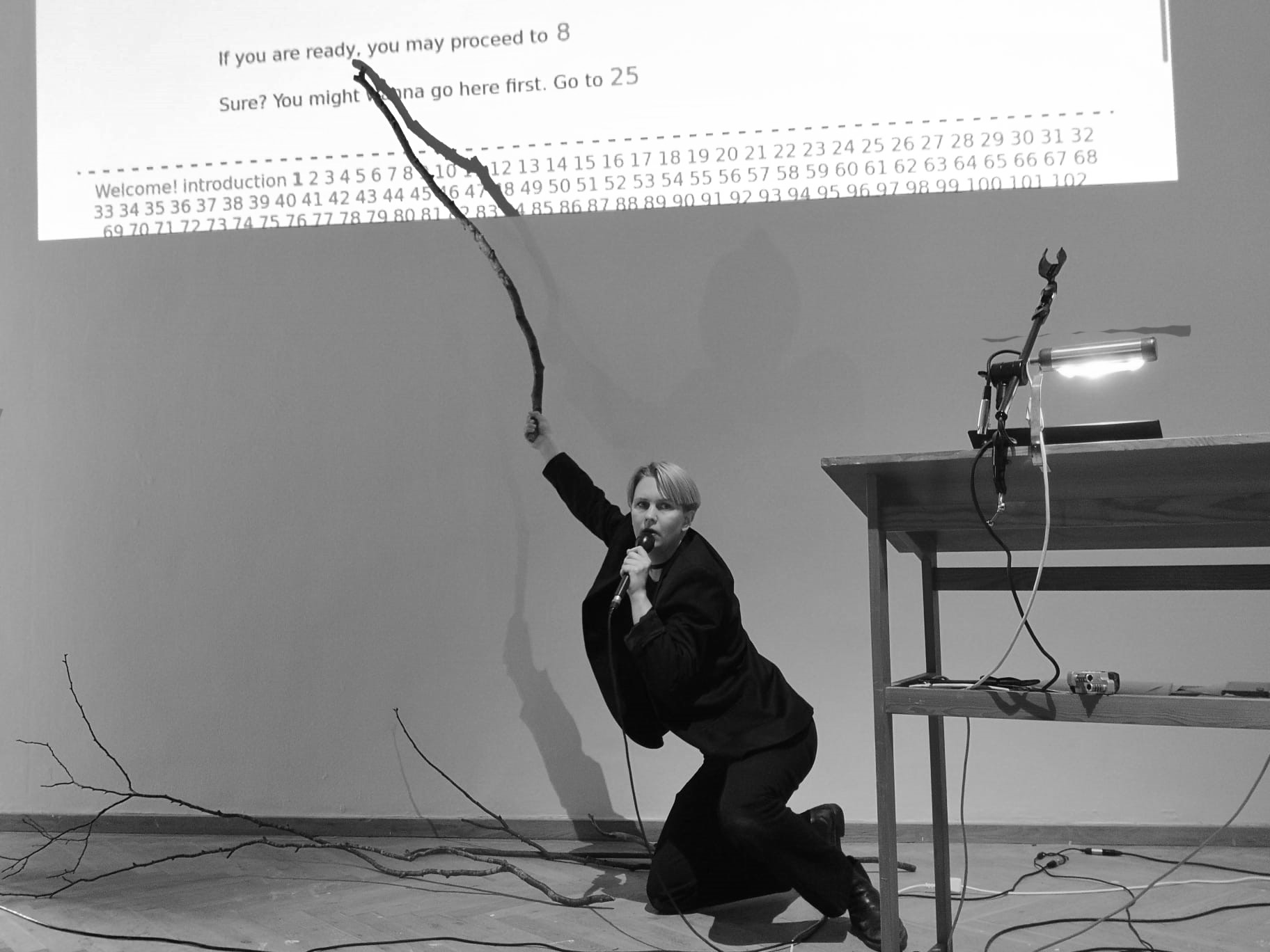
Essay-website: www.tierstimmenarchiv.dk

The online database of The Animal Sound Archive boasts of having more than 120 000 recordings of animals.
Although it is open to the public, there is no instruction manual on how to navigate through it. Reading the metadata that comes with each archived entry hints about a context in which the animals were recorded; a scenery - but there is no way of smoothly moving between the scenes, from one recording to another. There is no chronology and no causality of action.
On July 5, 2018, you wrote an email to Karl, but he never responded...
Looking for an alternative way of navigating this overwhelming amount of data, I turn to storytelling. Stories give an illusion of continuity in time, inventing meanings that links together event to event, recording to recording.
What if the voices of animals managed to escape? I mix fiction and science, re-write scientific reports, and imitate the voices of animals. Writing a story, I become an author, an authority. At one point, I transform into a wolf.
You had written to Karl because you know that he keeps the recorders in his office, and you want to get into his office again.
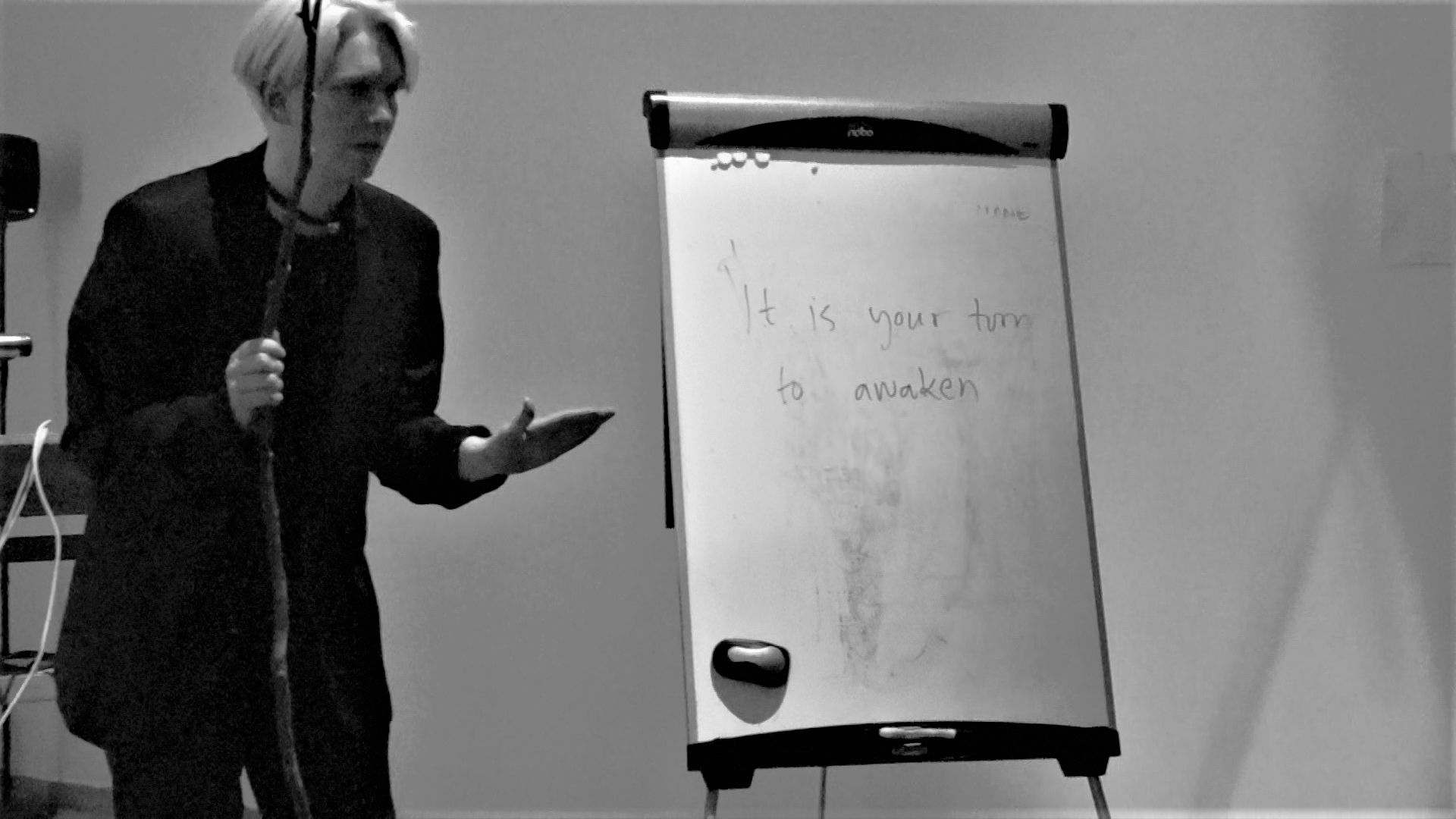
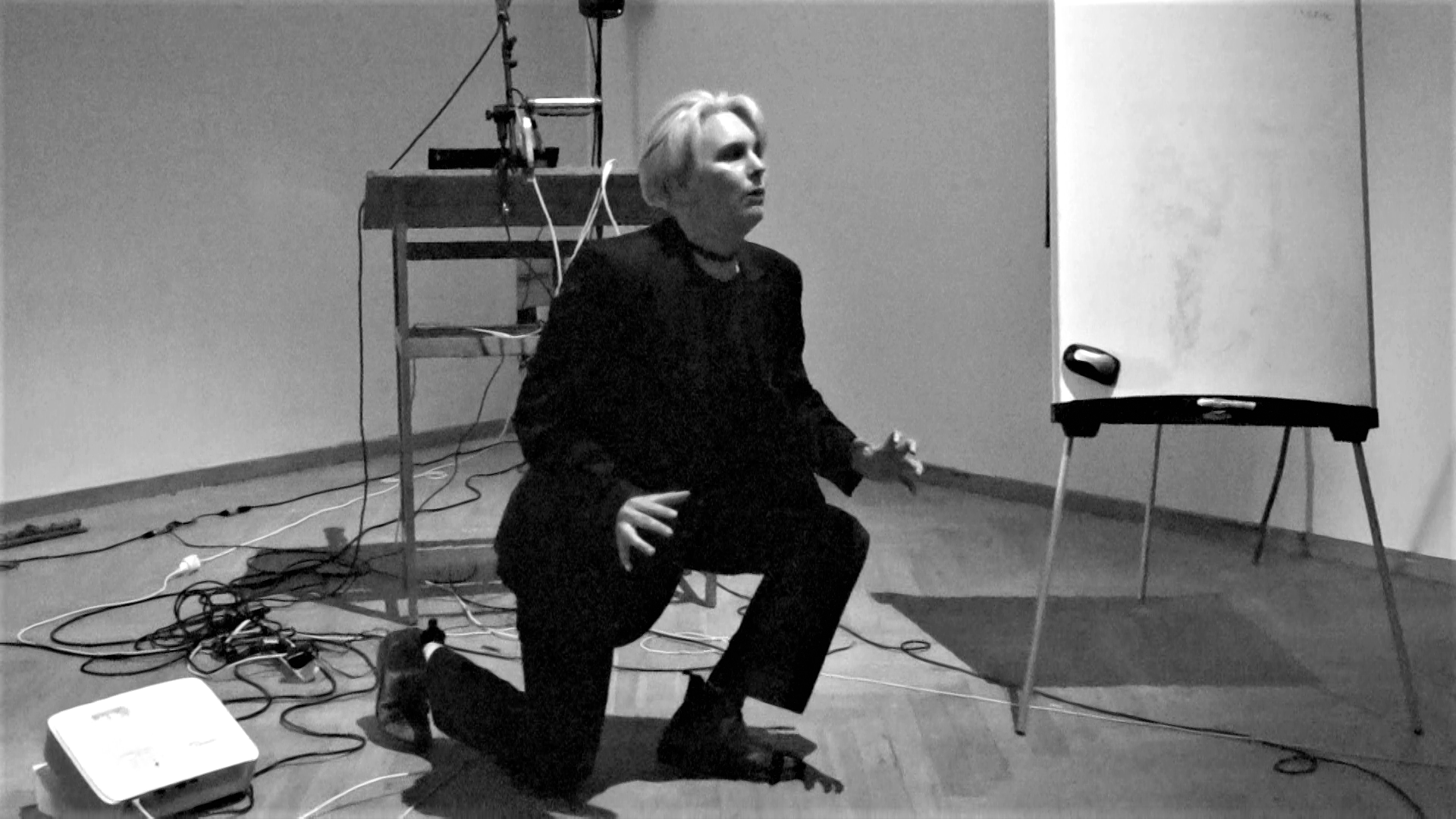
You want to gently touch the metal surfaces, you want to press the buttons, you want to smell the inputs and the outputs, you want to hold them in your arms and speak softly, in German...
We archive because we want to remember. Having a shared past gives us an identity, a sense of belonging together in this world.
The Animal Sound Archive is made by humans, yet our own voices are strikingly abscent in the recordings. It is producing a history of human silence. It speaks of a past where we did not exist. And it grows, adding layers and layers of recordings, layers and layers of voices, layers and layers of time, longer times, longer recordings that nobody has time to listen to.
